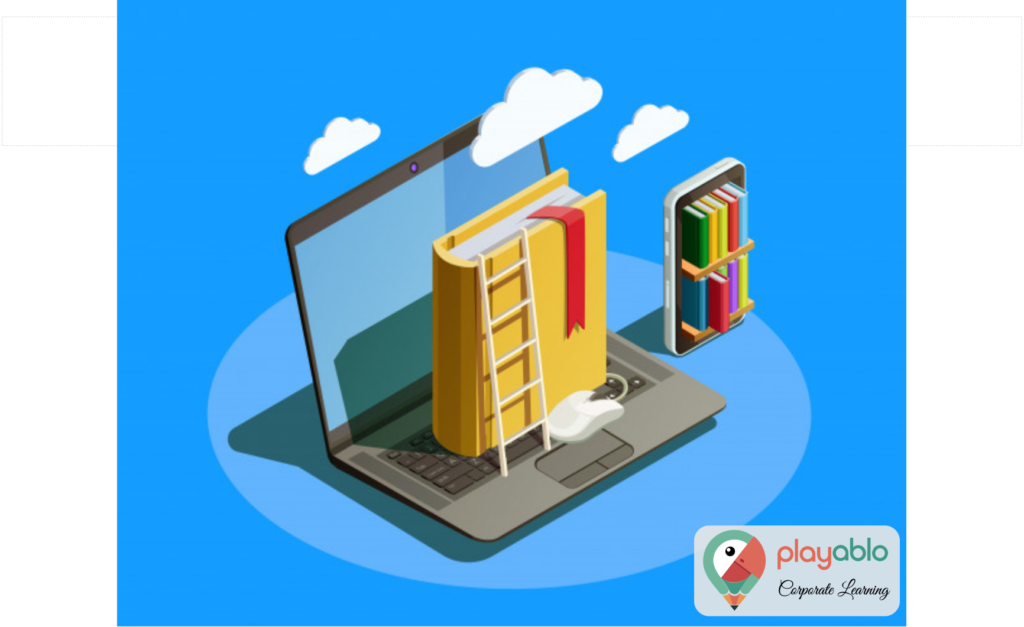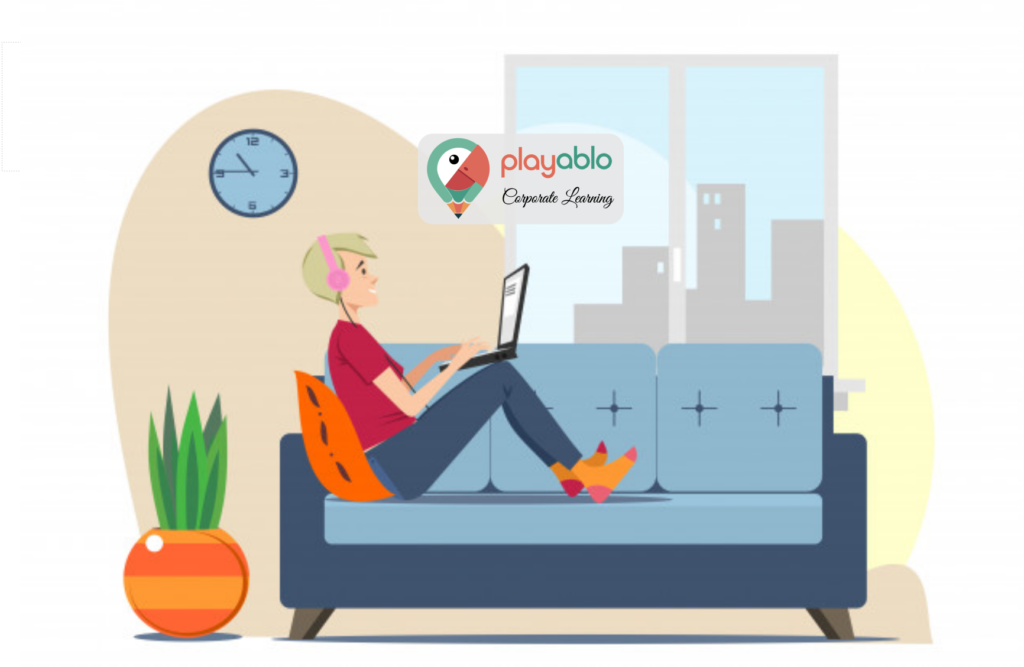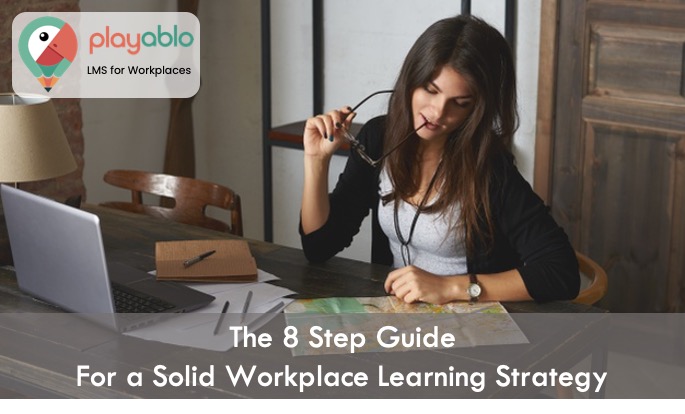What demands a change to the traditional methods of designing a workplace learning strategy? Well, in the last ten years have witnessed a rapid evolution within the global workforce. Some of the factors responsible for this change are an increasingly competitive business landscape, rising complexity, and the digital revolution. Hence, we have seen a considerable shift in the mix of diverse employees.
On the other hand, reskilling and upskilling of the workforce has assumed a seat of prime importance. Why? Consistent uncertainty, a multigenerational workforce, and shorter shelf life for knowledge. Additionally, with a transition to a digital, knowledge-based economy, we have witnessed a vibrant workforce. And as per McKinsey, “Research suggests that a very significant percentage of market capitalisation in public companies is based on intangible assets—skilled employees, exceptional leaders, and knowledge.”
Table of Contents
Learning and Development: The Paradigm Shift and the Role of the New Age L&D Leaders

The trends mentioned above have solidified the significance of the learning and development (L&D) function. L&D leaders must be aware of the changes in the online training market to meet the evolving needs of organisations. And this entails the design of a solid workplace learning strategy. The management must take up a broader role in their companies to extract the maximum value from training programs and curriculum development. They need to formulate an ambitious vision for the function. And an essential component of this effort is a comprehensive, coordinated strategy that engages the organisation and encourages collaboration.
Ad: PlayAblo’s Enterprise-Grade Micro-Learning platform is for the modern corporate learner. Moreover, micro-Learning, along with assessments and gamification features, ensures learning outcome measurement along with sustained engagement.
Find out more and request a custom demo!
Read More: 7 Workplace Learning Challenges Faced By Growing Organisations Today
How to Create a Solid Workplace Learning Strategy?
Designing a comprehensive workplace learning strategy is a systematic process. Although we have outlined an eight-step guide to develop one in this article, you can use your own discretion in following the chronology. You may carry out some of the steps in parallel and build the solutions over time after establishing the over-arching strategy. But the best bet is to go for a structured approach and then move forward with developing or reviewing an L&D strategy. The steps might appear elementary, but many organisations’ L&D frameworks do not reflect the rigour associated with them.
However, before moving to the steps, let’s explain how the learning department plays a role in designing your organisational strategy and its significant components. The primary roles of the L&D function are to attract and retain talent, develop people’s capabilities, create a values-based culture, build an employer brand, and motivate and engage employees.
What Are the Components of a Successful Workplace Learning Strategy?
McKinsey suggests nine dimensions that contribute to a robust L&D function. Combining these dimensions, they have proposed the ACADEMIES framework, covering all aspects of L&D operations, from setting aspirations to measuring impact. Although many companies regularly execute on several dimensions of this framework, recent research found that only a few fully mature in all dimensions. So what are these elements?
- Alignment with business strategy
- Co-ownership between business units and HR
- Assessment of capability gaps and estimated value
- Design of learning journeys
- Execution and scale-up
- Measurement of Impact on business performance
- Strategic alignment
- Integration of L&D interventions into HR processes
- Systems and learning technology applications
Now, to ensure that all of the above dimensions are present in your workplace learning strategy, you need to adopt a structured approach. And this is where we chip in!
Read More: 7 Habits of Highly Effective Chief Learning Officers
The Eight Step Guide to Create the Perfect Workplace Learning Strategy
1. Create a clear vision of your L&D function’s end goals and metrics

Research shows that L&D is not always viewed as a strategic priority:
- While 78% of leaders surveyed believe that their L&D plan is in line with their business strategy, only 65% believe that their learning strategy is responsive to changes in the external environment.
- Only 59% of the leaders surveyed feel that learning interventions at their organisation help employees fulfil their current KPIs.
- While 67%of respondents agree their L&D team can anticipate the training that may be required to meet the future demands of the business, only 40% Of respondents feel the L&D team has done a SWOT analysis of their business model.
Hence, ensure that your L&D team’s objectives are in tandem with the organisation’s strategy and priorities. While developing your metrics, make it a point to consult with all key stakeholders. To boost employee development that aligns with the business, the L&D function must have a clear grasp of the end goals to become true partners in their organisation’s transformational journey.
2. Make an inventory of all existing L&D activity

You can then start working on your workplace learning strategy by making an inventory of your current L&D activities, including the name, type, objective, vendor, success measurement, and occurrences. Now, understand which of your existing resources will help you in designing your learning policy. For instance, if you have old, obsolete legacy content, you can reuse them by taking the help of a learning management system software provider like PlayAblo. Our experts will transform your lengthy training materials into engaging, bite-sized, mobile-friendly modules — suited for the modern millennial learner.
Read More: Your Go-to Guide to Convert PPT to Mobile Learning
3. Create the Right Curriculum

To fulfil point number one, design the correct curriculum. While developing training modules, ensure that the basis of the content is both organisational and role needs, innovative & applied solutions, and ROI. Gather insights on the primary end goals — what do you want to achieve? What are your resources available at hand? With this information, get your content-design project started. Once the set-up is in place, you can continually add updates and improvisations. Over time, you will see you have surpassed your original goals!
4. If there is a gap between points one and three, you need to revise your curriculum

Now, if your curriculum is not in alignment with your L&D department’s end goals, it means that your workplace learning strategy is not apt. There are gaps, and to close them, you need to revise your modules. In fact, after creating your targeted, appealing, relevant, and interactive eLearning content, you have to place it ‘in context’ to multiply its relevance factor. Of course, to achieve this, you have to implement the correct instructional strategies. Assuming that your one-time content creation process is complete, do you think you are done and dusted? NO! You continuously have to update your content in e-learning courses. With new trends ruling the market every year, regular improvisations are essential.
5. Have clear definitions of your processes

To deliver a solid workplace learning strategy, you need to have clear definitions for all your processes, such as Roles, HR & business interfaces, a learning management system for corporates, budget, delivery, scheduling, and tracking. For instance, what are the roles and responsibilities of each team member? Which is the type of LMS you want to invest in? How much do you plan on spending on training courses? Which platforms will deliver your training sessions? Do you have suitable tracking mechanisms in place? Once you get the answers to all these questions, you will have a clear idea of how to tweak your learning policy.
6. Ensure that you have set your priorities

Prioritise your processes. You cannot work parallelly on several procedures all at once. Decide which areas of your workplace learning strategy you want to focus on first. Set deadlines and, accordingly, complete your projects. Following this, set a design, select vendors, and recruit instructors. Be mindful that selecting LMS providers and facilitators without defining your requirements first will lead to rash decisions — that won’t give you the best results in the long run.
7. Once the curriculum is established, devise targeted solutions

The most significant enablers for just-in-time learning are technology platforms and applications. Examples of such solutions are learning-management systems, virtual classrooms, mobile learning apps, embedded performance-support systems, polling software, learning-video platforms, learning-assessment and -measurement platforms, massive open online courses (MOOCs), and small private online courses (SPOCs). You can also think about Cloud or SaaS-based platforms, which offer L&D functions the scope to access the latest functionality without going through lengthy and expensive implementations of an on-premises system.
8. Finally, measure your learners’ progress

With an LMS in place, you can quickly and continually evaluate the effectiveness of your training program by creating automated reports with the help of a proper tracking system. You can measure learners’ progress in terms of usage, completion rates, and performance. You can additionally use these metrics to evaluate training over the entire course duration or from one department to another. An analytical dashboard delivers meaningful and actionable data in a single platform, rendering your LMS highly efficient. And if you notice gap areas in the numbers, include the required tweaks in your training modules.
Conclusion
As an organisation, you might use several terms to define your L&D function — curriculum, framework, or programs. Whatever be the case, L&D solutions need to fit within a strategy. Each of your solutions must have a relevant purpose, target group, and value. L&D solutions should not be a part of your calendar to merely count the number of training days. It should entwine with your company’s performance goals. And this is how an L&D solution will enable more successful delivery and performance.
Read More: What Should Today’s Workplace Learning Team Structure Look Like?
Additionally, you can also take the help of strategic programs defined for target groups. For instance, leadership or high potential programs. Such sessions aid in enhancing the capability of leaders and elevate the succession pipeline. These programs, coupled with evaluation reports, play a huge role in meeting an enterprise’s needs. Yes, developing a solid workplace learning strategy is a must if you wish to elevate the long-term success of your business. Do you want to know more? You can contact our team at PlayAblo!
Ad: PlayAblo’s Enterprise-Grade Micro-Learning platform is for the modern corporate learner. Moreover, micro-Learning, along with assessments and gamification features, ensures learning outcome measurement along with sustained engagement.
Find out more and request a custom demo!






